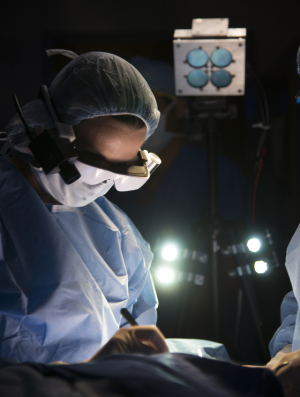by
Lauren Dubinsky, Senior Reporter | April 21, 2014

Dr. Julie Margenthaler
(Courtesy of Robert Boston
Washington University School of Medicine
When Dr. Julie Margenthaler of Washington University School of Medicine stepped into the operating room on February 10th it wasn't a normal day for her. She was gearing up to perform the first surgery on a human patient using a pair of high-tech goggles that illuminate cancer cells.
The lights were turned off and the fluorescent light source was turned on. At first the tissue looked normal but when the fluorescent dye came out in the midst of that tissue, it illuminated the cancer cells.
A study in the Journal of Biomedical Optics reported that tumors as small as one millimeter in diameter could be detected with this technology.



Ad Statistics
Times Displayed: 172766
Times Visited: 3129 For those who need to move fast and expand clinical capabilities -- and would love new equipment -- the uCT 550 Advance offers a new fully configured 80-slice CT in up to 2 weeks with routine maintenance and parts and Software Upgrades for Life™ included.
The goggles were developed by a team led by Samuel Achilefu, professor of radiology and biomedical engineering at Washington University. Right now, it's still in the early stages of development and they're conducting a pilot study to assess how feasible and safe it is.
It doesn't have an official name yet but they refer to them as the "cancer goggles".
Achilefu has a patent pending for both the goggles and the fluorescent dye, and Margenthaler expects it to be approved by the end of the year.
It's currently only being studied for breast and melanoma cancer but Margenthaler envisions that in the future it will be used for many other types of cancer and even other medical problems including bowel ischemia.
Before surgery, the patient is injected with a fluorescent dye that contains a targeted molecular agent that attaches to cancer cells. The goggles use what's called optical imaging to detect the dye and make it glow blue.
Surgeons do have imaging devices including mammograms, ultrasounds and MRIs that enable them to see cancer cells but those devices don't allow them to see down to the microscopic level, especially with breast cancer.
"The problem is that we don't have any way in the operating room to make sure that microscopically we got all of the cancer out," Margenthaler told DOTmed News.
They remove the tumor and some neighboring tissue and samples are sent to a pathologist. After a few days, they get the results back and in many cases, a second surgery is required to remove additional tissue.
In 2010, over 200,000 women in the U.S. were diagnosed with breast cancer, according to the Centers for Disease Control and Prevention. Anywhere between 20 and 40 percent of women who undergo a lumpectomy end up having second surgeries, said Margenthaler.
"What we're hoping these goggles are going to do is really cut that down or hopefully eliminate it all together so that we can remove all of the tumor more effectively at the time of the surgery," she said.
Back to HCB News

